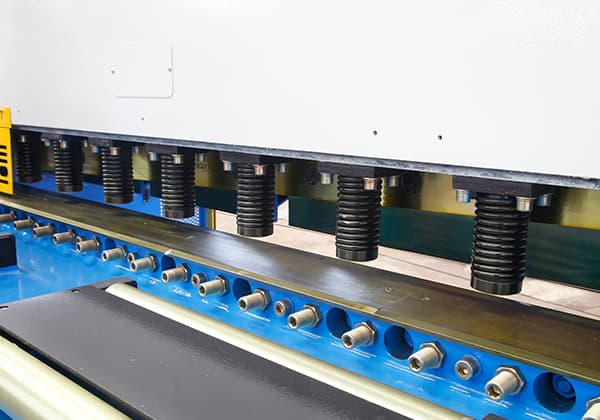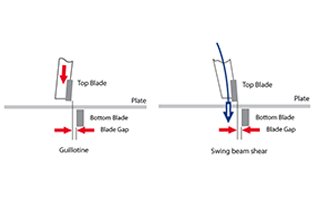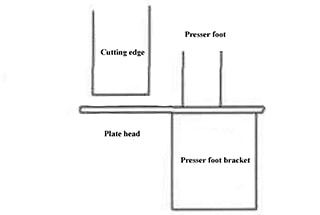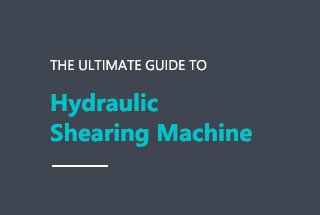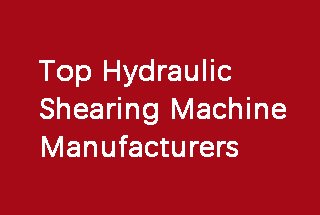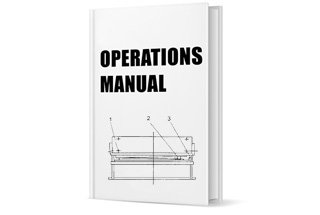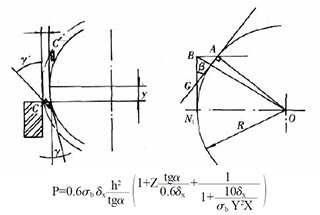
Have you ever wondered how massive sheets of metal are precisely cut with minimal effort? In this article, we explore the fascinating world of hydraulic guillotine shears. You’ll learn about their safety features, operation guidelines, and the technology behind their precise cuts. Get ready to uncover the secrets of these powerful machines and enhance your understanding of their incredible capabilities.
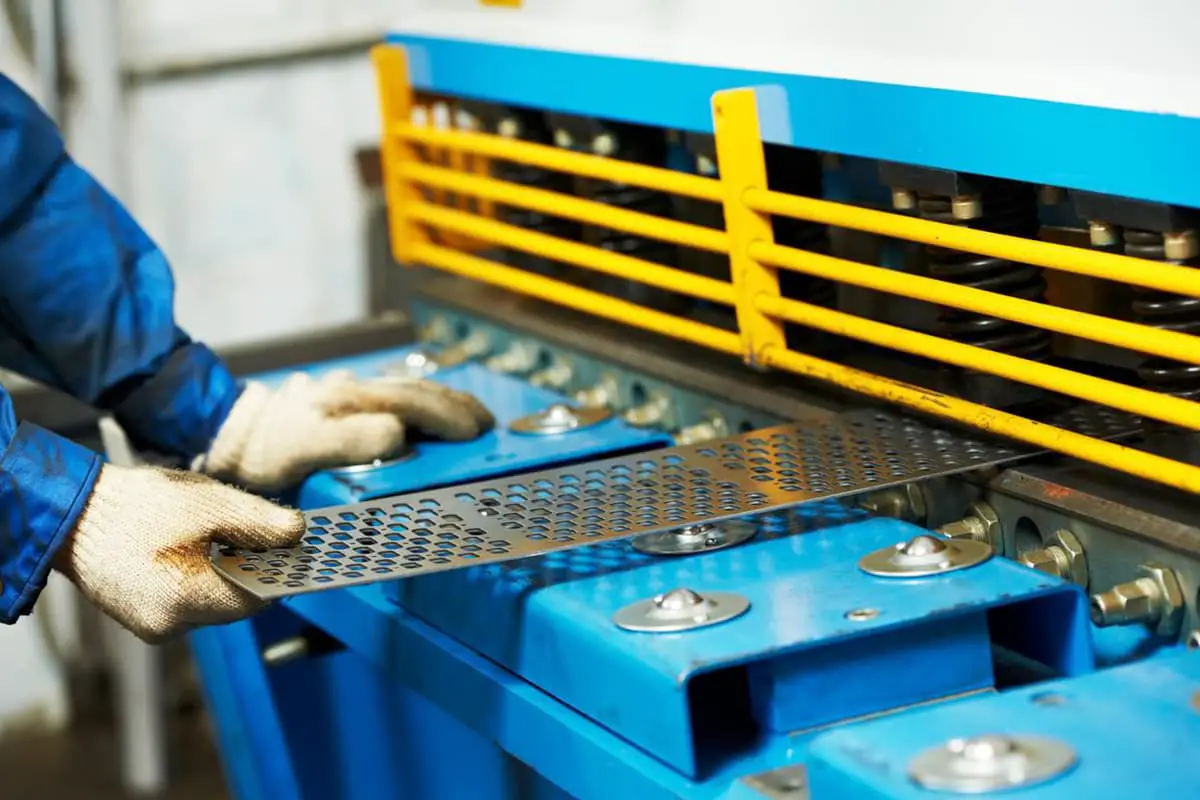
When operating the hydraulic guillotine shears machine, adherence to fundamental safety protocols is paramount to mitigate risks of fire, electric shock, and personal injury. Prior to machine operation, operators must thoroughly review and comprehend all instructions, retaining them for future reference.
Operators must possess a comprehensive understanding of the machine’s construction, features, and operational parameters as detailed in the Operation Manual. In multi-operator scenarios, a designated supervisor should oversee production to ensure cohesive and safe operation.
It is strictly prohibited to operate the machine with any body part, including hands, within the machine’s operational zone. Particular caution must be exercised to prevent hands from entering the space between the upper and lower dies, as this poses a severe risk of injury.
Lubrication must be applied in accordance with the provided lubrication diagram, ensuring proper machine maintenance and longevity.
Maintain a clean, organized workspace, including the surrounding area and electrical isolation lines. Special attention should be given to keeping the worktable area clear of obstructions to prevent accidents and ensure optimal workflow.
Conduct regular, comprehensive inspections of all machine components to identify and address potential hazards before they escalate.
The machine’s maximum working pressure is factory-set at 23 MPa. This can be adjusted to meet specific operational requirements, but only by qualified personnel following proper procedures.
Access to the electric cabinet is restricted to authorized personnel only. Before opening the cabinet door, verify that the power switch is in the OFF position to prevent electrical hazards.
This warning sign and the Operation Manual are integral to machine safety. Do not remove, deface, or relocate them under any circumstances.

We strongly urge all users and operators to thoroughly review this Operation Manual before operating the machine. This comprehensive guide is designed for specialized and qualified personnel, providing essential diagrams and documentation to ensure safe handling, proper installation, efficient operation, and effective maintenance of the hydraulic sheet metal shearing machine.
The information presented in this manual is accurate as of the publication date. However, our company reserves the right to implement modifications and improvements without prior notification, as part of our commitment to continuous product enhancement.
Proper installation of the machine, as detailed in this manual, is crucial for optimal performance. Regular inspections and diligent maintenance services are equally important to maintain the machine’s efficiency, precision, and longevity. Adherence to these guidelines will significantly extend the machine’s service life and ensure consistent, high-quality output.
It is imperative to note that incorrect or irresponsible operation of the hydraulic sheet metal shearing machine can result in irreparable damage to the equipment and, more critically, compromise the safety of the operator and surrounding personnel. Safety protocols outlined in this manual must be strictly followed at all times.
Our company disclaims all responsibility for any damages or injuries resulting from improper servicing, unauthorized modifications, or connections made by unqualified personnel. To maintain the machine’s warranty and ensure its safe operation, all maintenance and modifications must be performed by authorized technicians using approved parts and procedures.
We strongly emphasize the importance of fully comprehending this manual before attempting to operate the hydraulic sheet metal shearing machine. Proper understanding of the machine’s capabilities, limitations, and safety features is essential for maximizing productivity while maintaining a safe working environment.
By following the guidelines presented in this manual, operators can ensure the longevity of the machine, maintain optimal cutting precision, and uphold the highest standards of workplace safety in sheet metal fabrication operations.
This machine is renowned for its proven reliability and high-performance capabilities in precision metal cutting operations.
The robust frame construction, engineered with high-strength materials, ensures long-term structural integrity and consistent cutting accuracy over extended periods of operation.
The innovative monoblock hydraulic system significantly reduces hydraulic piping, minimizing potential leak points and enhancing overall system reliability and maintenance efficiency.
The dual-pump hydraulic system offers rapid, independent cutting action while allowing for variable hold-down pressure, optimizing cutting performance across diverse material thicknesses and types.
Integrated hydraulic overload protection safeguards critical components against excessive forces, enhancing machine longevity and operational safety.
High-intensity LED illumination is strategically positioned to provide optimal visibility of the cutting zone, improving cut accuracy and operator safety.
Precision blade clearance adjustment is facilitated through a user-friendly indicator system calibrated to material thickness, ensuring consistent cut quality across various stock dimensions.
The hydro-electric rake angle adjustment system enables fine-tuning of the blade angle, minimizing material distortion and maximizing the machine’s effective cutting capacity for thicker plates.
The shearing blades are fabricated from premium-grade D2 tool steel, featuring high chromium and carbon content for superior hardness, wear resistance, and cutting performance. These blades are exclusively manufactured in the UK to stringent quality standards.
A motorized back-gauge with a 750mm stroke is equipped with digital readout and fine-adjustment hand wheel, facilitating precise material positioning and repetitive cutting operations.
The electrical system incorporates industrial-grade components with built-in motor overload protection, ensuring reliable performance and safeguarding against electrical failures.
A 1000mm squaring arm with an integrated scale and retractable stop enhances material handling and improves cutting accuracy for large sheet metal operations.
The machine is delivered with a fully primed hydraulic system, allowing for immediate operation upon installation.
A comprehensive set of maintenance tools is included, supporting routine upkeep and minor adjustments to maintain optimal performance.
Packing and Shipment of Guillotine Shears
All machines are meticulously prepared for shipment, with the squaring arm and foot pedal securely fastened to the handguard to prevent movement during transit. A comprehensive set of working tools and a detailed operation manual are safely stored within the electrical panel for easy access upon arrival.
All exposed metallic surfaces are protected with a corrosion-resistant compound, easily removable using appropriate solvents or kerosene.
Lifting the Guillotine Shearing Machine
For safe hoisting, utilize only certified wire ropes or chains with adequate load capacity. Attach these to the two engineered lifting points integrated into the machine frame on both sides. Always verify the lifting equipment’s rated capacity exceeds the machine’s weight by a suitable safety factor.
Foundation Requirements
While our shears are engineered for freestanding operation, optimal performance and longevity are achieved with a high-quality, reinforced concrete foundation. The recommended specifications include:
Installation and Leveling Procedure
Precise leveling is critical for ensuring optimal cutting accuracy and minimizing wear on components. Follow these steps:
Electrical Installation
Prior to power connection:
Always consult a licensed electrician for final connections and safety checks.
| Start button | To start the main motor running and control circuit |
| Stop button | To stop the main motor running and control circuit |
| Auto/Man mode | Select the working mode |
| Selector Switch | In Auto mode: -Rake angle adjustment function able -Motorized back gauge function able -Can command cut by foot pedal onlyIn Man mode: -Rake angle adjustment not- Function able -Motorized back gauge not-function able -Command up and down of top blade carrier by push button ‘↑’ or ‘↓’ |
| Foot pedal | Push to command cutting blade down and release to have top blade carrier rise in AUTO mode. |
| Illumination light | Working light to shine at cutting blade area, operating at single phase power supply at 220V, 50Hz. |
Preparation of hydraulic shearing machine
Remove the squaring arm and foot pedal from the handguard area. Set up the squaring arm on the left side (close to the electrical panel) by bolting it down to the shearing machine table and two side holes.
STARTING THE SHEARING MACHINE
Push the ‘START’ button and release it. The motor ‘on’ indicator light should turn on. Then, set the mode selector from ‘MAN’ to ‘AUTO’ position. The top blade carrier will rise after a few seconds. If it does not, this indicates that the motor is running in the wrong direction. In this case, turn off the power supply, reverse one of the two phase wires, and start the motor again. The top blade carrier will rise and stop when it reaches the limit switch L/S 2.
RAKE ANGLE ADJUSTMENT
Put the selector switch in ‘AUTO’ mode. Rake angle adjustment is only available in this mode.
Press the ‘angle +’ button, the top blade carrier should rise to 3 degrees (three lights should turn on) and stop when it reaches limit switch L/S 7.
Press the ‘angle -‘ button, the top blade carrier should lower to 1 degree (one light should turn on) and stop when it reaches limit switch L/S 5.
The above confirms that the rake angle adjustment system is functioning properly.
SETTING UP SQUARING ARM
Start the motor and keep it in AUTO mode.
Press the ‘angle -‘ button until the rake angle reduces to 1 degree and stops by hitting limit switch L/S 5.
Switch the selector to ‘MAN’ mode.
Press the ‘↓’ button, the top blade will come down and intersect with the lower blade. Check that the point of intersection is about 300mm to 400mm from the start of the cut (LHS).
Use a reliable tri-square to measure against the top blade to adjust the squareness of the squaring arm using the two side bolts and nuts.
BLADE CLEARANCE ADJUSTMENT
At the rear of the shearing machine, there are two blade clearance adjustment levels on both sides of the machine, both with an indication of sheet thickness. The factory sets them at the lowest position during delivery, which is suitable for cutting mild steel plates 5 to 6mm (1/4 inch) thick. To adjust the settings, pull the locking sleeve and lift upward to the 1mm position. It will be heavier to set it to the top position (1mm) than the lower position (6mm) due to spring tension. Both sides of the blade clearance adjustment are factory set and should have similar tension.
MOTORISED BACKGAUGE
Put the selector switch in AUTO mode, the motorized back gauge only works in this mode. The factory has accurately set the motorized back gauge reading and it should correspond to the distance from the back gauge bar to the cutting edge. When you press the ‘+’ button, the back gauge bar moves towards the rear, the reading increases, and it stops when it reaches the maximum travel limit switch L/S 3. When you press the ‘-‘ button, the back gauge bar moves towards the front, the reading decreases, and it stops when it reaches the minimum travel limit switch L/S 4. The factory has set the parallelism of the back gauge, but it can be calibrated if needed. To remove the anti-rust coating prior to cutting, bring the back gauge bar to the rear.
Blade Clearance Table
| Quick blade setting | Clearance | For material thickness | Blade | Clearance |
| Top position | 1 to 2 mm | ( 1/24’’ to 1/12’’ ) | 0.05 mm | (0.002”) |
| 2nd position | 3 to 4.5 mm | ( 1/8” to 3/16’’ ) | 0.3 mm | (0.012”) |
| Lowest position | 5 to 6.5mm | (5/24” to 13/48’’ ) | 0.6 mm | (0.023”) |
Only Experienced and Skilled Personnel Allowed
It is recommended that only experienced and skilled individuals perform blade clearance checks. It is also recommended that two people work together.
Proper Procedure
The back gauge should be set to its rearmost position (maximum out) before starting.
Safety First
Exercise extreme caution when setting or checking blade clearance as improper handling may result in excessive blade damage or injury to personnel.
Lubrication and Hydraulic Oil
This guillotine shearing machine requires hydraulic oil grade 68. Only use this same grade of oil for refilling or replacement.
Lubrication program
Back Gauge Calibration
The back gauge of the machine has been calibrated correctly at the factory. However, it may need to be recalibrated as necessary.
Procedure for Adjusting Parallelism of Back Gauge
Shear Blade Replacement Procedure
CAUTION: Only qualified and experienced personnel should perform this task to prevent damage to the shear blades/machine or potential injury to personnel.
Grinding of Shear Blade
The shear blade is rectangular in shape and has four cutting edges. Regrinding is only necessary once all four edges have been used.
REMEMBER: Only grind the thickness, not the height of the blade.
After regrinding, it may be necessary to close the top blade carrier by tightening the tensioning bolt located near the quick blade clearance lever due to the loss of grind-off thickness of the shear blades.
Hydraulic system (Refer to Hydraulic Circuit – Drg. 9.1 (b) )
When the foot pedal is pressed and held, valves C and D are energized, causing the plate clamps to descend.
The pressure switch triggers valve B to energize, which causes the top blade to descend and cut the material.
When the foot pedal is released at the end of the cut or at any point during the cut, valves A, D, and G are energized, causing the top blade to rise to the top dead center and be ready for the next cut.
To increase the rake angle, valves D and F are energized.
To decrease the rake angle, valves D and E are energized.
Electrical System
In Auto mode, the contactor R4 is energized during the idle state.
When the foot pedal is depressed and held, contactor R1 commands the plate clamps and blade to descend.
Upon release of the foot pedal for the upstroke, contactor R2 must be energized.
Contactor R3 (anti-repetition) is energized as long as the foot pedal is depressed during the upstroke of the top blade to prevent a second stroke of the top blade.
Contactor A1 moves the back gauge away from the cutting edge.
Contactor A2 moves the back gauge towards the cutting edge.
Motorized back gauge
The back gauge serves as a gauging device, stopping the plate to be cut when pushed into the Shear. It can be moved by powered or manual means, using a pair of accurate lead screws. In the RAS series machine, the readout is located in front of the machine and can be adjusted to 0.1mm increments. The back-stop bar can also be aligned for straightness by adjusting the setting bolts and counter-bolt within the bar itself. Regular lubrication is necessary, at intervals of once a week.
Shearing Machine Cannot Start
Shearing Machine Cannot Cut
Ram Chattering on Down Stroke
Shearing Machine Operate By Itself
Fuse F2, 10A Fused
Fuse F3, 6A Fused
Plate Clamp Come down But Top Blade Carrier Not Working
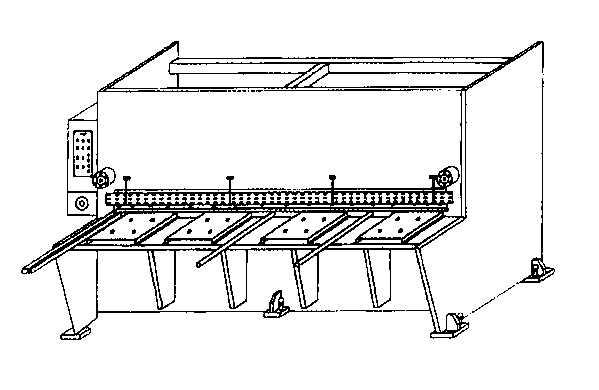
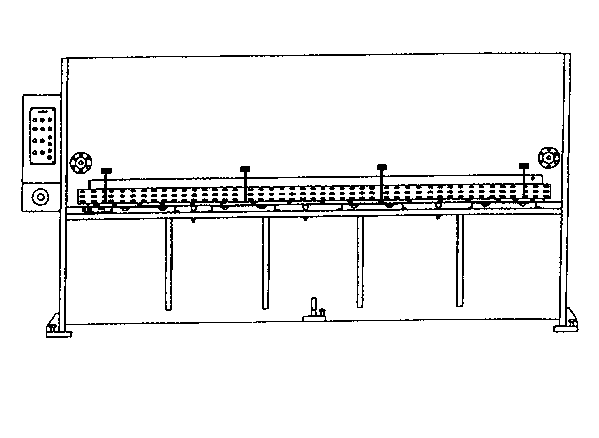
(A) FRONT VIEW
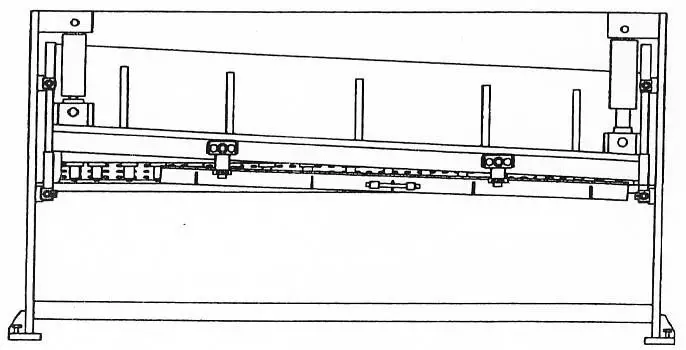
(B) REAR VIEW
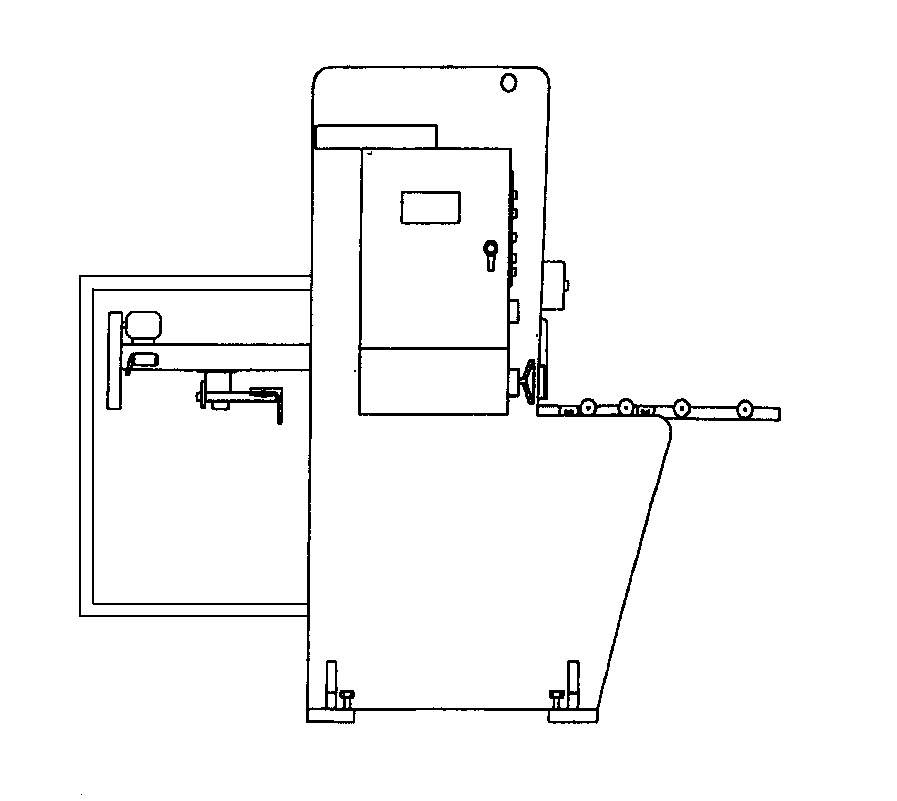
SIDE VIEW
LIFTING of Hydraulic Guillotine Shearing Machine
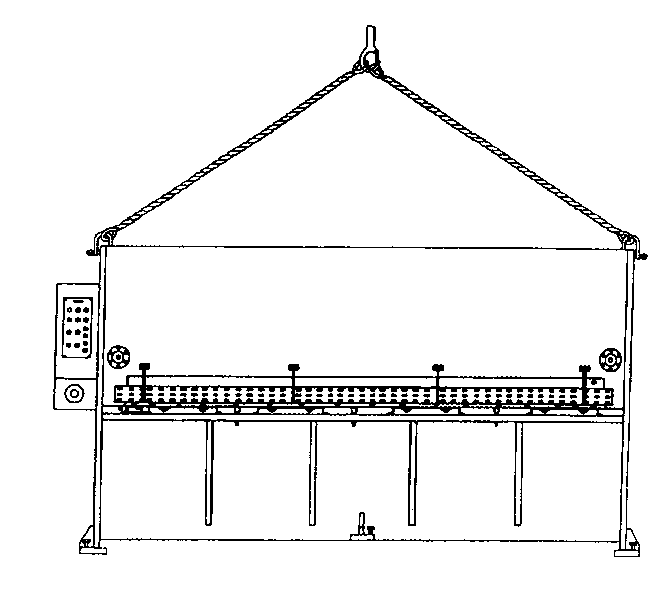
PLACING OF LEVELING GAUGE
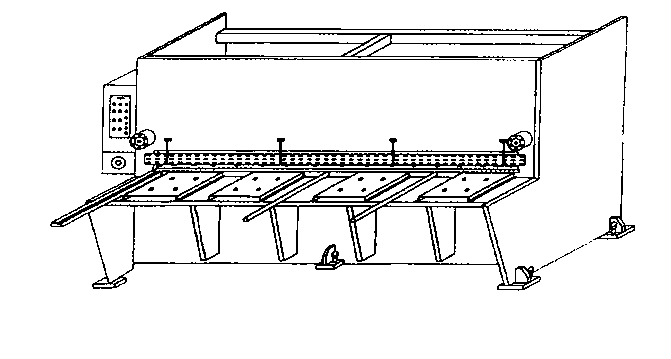
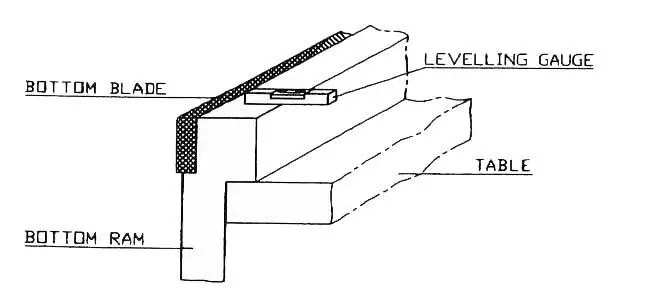
NOTE: Ensure that the leveling gauge is not in contact with the blade and place it as indicated above.
GUILLOTINE SHEARS BACK-GAUGE ASSEMBLY
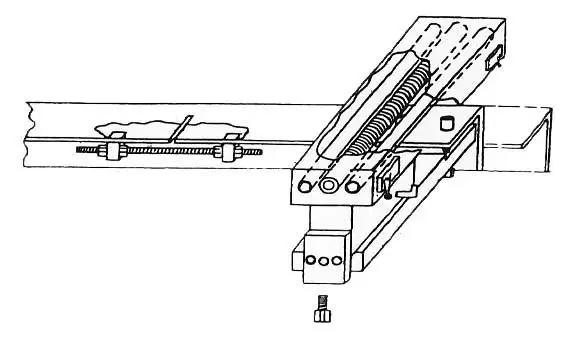
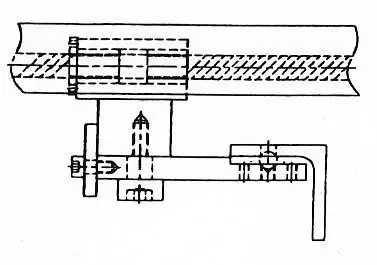
SIDE VIEW
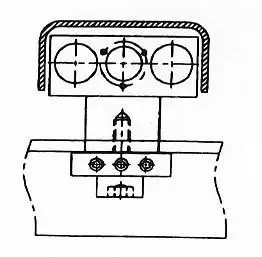
REAR VIEW
> Check out hydraulic swing beam shearing machine operation manual

